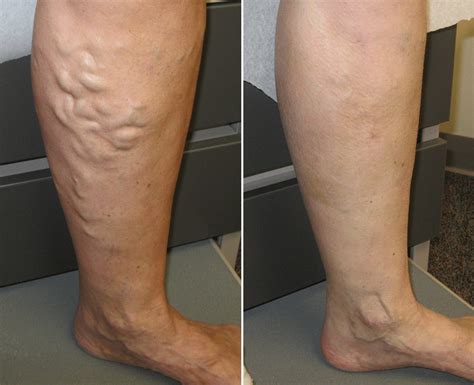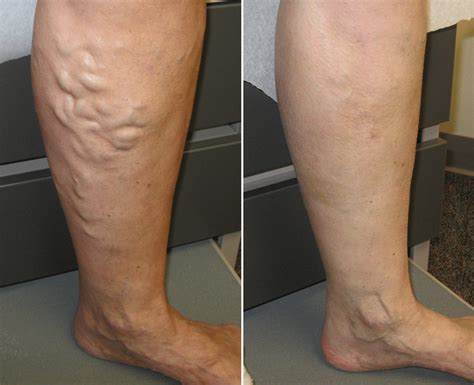

Varicose veins are swollen, twisted veins that can cause pain and discomfort. Learn about causes, symptoms, and treatments for this condition.
Varicose veins, also known as spider veins, are a common condition that affects millions of people worldwide. Although they may seem like a cosmetic issue, varicose veins can cause discomfort, pain, and even serious health problems if left untreated. From mild swelling to severe leg cramps, the symptoms of varicose veins can be debilitating and affect your quality of life. However, with proper diagnosis and treatment, you can alleviate the pain and discomfort caused by this condition and prevent it from worsening over time.
Daftar Isi
Introduction
Varicose veins are a common condition that affects many people, especially those over the age of 50. They occur when the veins in the legs become swollen and twisted, causing discomfort and pain. While varicose veins are not considered a serious medical condition, they can have a significant impact on a person’s quality of life.
Causes of Varicose Veins
Varicose veins are caused by weakened or damaged valves in the veins. These valves are responsible for ensuring that blood flows properly through the veins and back to the heart. When the valves become weakened, blood can pool in the veins, causing them to swell and twist. There are several factors that can increase a person’s risk of developing varicose veins, including obesity, pregnancy, and a family history of the condition.
Symptoms of Varicose Veins
The most common symptom of varicose veins is the appearance of twisted, bulging veins in the legs. Other symptoms may include aching or cramping in the legs, itchiness, and swelling. In severe cases, varicose veins may cause skin ulcers or bleeding.
Treatment Options
While varicose veins cannot be cured, there are several treatment options available to help manage the symptoms. Compression stockings can be worn to help improve circulation and reduce swelling. In more severe cases, surgery may be necessary to remove the affected veins.
Sclerotherapy
Sclerotherapy is a minimally invasive procedure that involves injecting a solution into the affected veins to close them off. This causes the blood to flow through healthier veins, reducing the appearance of varicose veins.
Laser Treatment
Laser treatment is a non-invasive procedure that uses intense bursts of light to heat and close off the affected veins. This can be an effective treatment option for smaller varicose veins.
Preventing Varicose Veins
While certain risk factors for varicose veins, such as age and family history, cannot be controlled, there are several lifestyle changes that can help reduce the risk of developing the condition. Maintaining a healthy weight, staying active, and avoiding prolonged periods of standing or sitting can all help improve circulation and reduce the risk of varicose veins.
Conclusion
Varicose veins are a common condition that can cause discomfort and pain. While they cannot be cured, there are several treatment options available to help manage the symptoms. By making lifestyle changes and taking steps to improve circulation, it is possible to reduce the risk of developing varicose veins and maintain good overall health.
Varicose veins are a common condition that affects many individuals, particularly women and aging people. These swollen and twisted veins appear mainly on the legs and occur when the valves in the veins fail to function properly. The blood then pools in the veins, causing them to enlarge and twist. Factors that increase the risk of developing varicose veins include obesity, a sedentary lifestyle, pregnancy, and a family history of the condition. Symptoms of varicose veins include heavy or achy legs, swelling, itching, and darkening of the skin around the affected area. In severe cases, varicose veins can cause painful ulcers to form. To diagnose varicose veins, a doctor will examine the affected area and may recommend an ultrasound to assess blood flow. Treatment options for varicose veins range from self-care measures such as wearing compression stockings and exercising regularly to medical procedures such as endovenous laser therapy and sclerotherapy. Self-care measures include elevating the legs, avoiding prolonged standing or sitting, engaging in low-impact exercise, and losing weight if necessary. Medical procedures include minimally-invasive techniques such as endovenous laser therapy and radiofrequency ablation, as well as more traditional surgical procedures such as vein stripping and ligation. While generally safe, medical procedures for varicose veins can carry some risks, including infection, bleeding, and nerve damage. Preventing varicose veins involves maintaining a healthy weight, engaging in regular exercise, avoiding prolonged standing or sitting, wearing supportive footwear, and wearing compression stockings if recommended by a doctor. It is important to seek medical attention if varicose veins are causing pain, discomfort, or affecting daily activities or if there is any sign of skin damage or ulceration around the affected area.Varicose veins are a common condition that affects millions of people worldwide. These twisted, enlarged veins can cause discomfort, pain, and even embarrassment for those who suffer from them. While there are some potential benefits to having varicose veins, there are also many downsides to this condition.Pros of Varicose Veins:1. Increased blood flow: Some studies have suggested that varicose veins may actually increase blood flow in the legs. This could be beneficial for people who have poor circulation or who are at risk for blood clots.2. Visible signs of vein health: Varicose veins can be an indicator of overall vein health. If you have visible varicose veins, it may be a sign that you need to pay more attention to your vein health and take steps to prevent further damage.3. May reduce risk of deep vein thrombosis: While the evidence is not conclusive, some studies have suggested that varicose veins may actually reduce the risk of deep vein thrombosis (DVT). This is a serious condition that can lead to blood clots and other complications.Cons of Varicose Veins:1. Pain and discomfort: Varicose veins can cause pain, swelling, and discomfort in the legs. This can make it difficult to stand or walk for long periods of time, and can interfere with daily activities.2. Embarrassment: Many people feel embarrassed or self-conscious about their varicose veins, especially if they are visible on the legs or other parts of the body.3. Increased risk of complications: Varicose veins can lead to a number of complications, including blood clots, skin ulcers, and other problems. If left untreated, these complications can become serious and require medical intervention.In conclusion, while varicose veins may have some potential benefits, the downsides of this condition are significant. If you are experiencing pain, discomfort, or other symptoms related to varicose veins, it is important to seek treatment from a qualified medical professional. With proper care and attention, you can manage your varicose veins and prevent them from causing further problems in the future.
Varicose veins are a common problem that affects millions of people worldwide. This condition occurs when the veins in the legs become enlarged and twisted, causing discomfort and pain. While varicose veins are not life-threatening, they can be extremely uncomfortable and affect your quality of life.
If you suffer from varicose veins, it is essential to take steps to manage your condition. This may involve lifestyle changes such as losing weight, exercising regularly, or wearing compression stockings. In some cases, medical intervention may be necessary, such as surgery or laser therapy.
It is important to remember that varicose veins are a treatable condition and that help is available. If you experience any symptoms such as pain, swelling, or discoloration in your legs, make an appointment with your doctor. With the right treatment and care, you can manage your varicose veins and enjoy a better quality of life.
Don’t let varicose veins hold you back. Take control of your health and seek the support and resources you need to manage this condition effectively. Remember, you are not alone, and there is no shame in seeking help. With the right treatment, you can overcome this condition and move forward with confidence and comfort.
Video varicose veins
Varicose veins are a common condition that affect many people, especially as they age. Here are some of the most frequently asked questions about varicose veins:
-
What are varicose veins?
Varicose veins are veins that have become enlarged and twisted. They often appear blue or purple and are commonly found in the legs.
-
What causes varicose veins?
Varicose veins are caused by weakened valves in the veins that prevent blood from flowing properly. This can cause blood to pool in the veins and lead to their enlargement.
-
Who is at risk for developing varicose veins?
Varicose veins are more common in women than men and are more likely to occur in older people. Other risk factors include obesity, pregnancy, and a family history of the condition.
-
What are the symptoms of varicose veins?
Symptoms of varicose veins can include swelling, pain, and aching in the affected area. Some people may also experience itching or a burning sensation.
-
How are varicose veins treated?
Treatment for varicose veins may include lifestyle changes such as exercise and weight loss, compression stockings, or minimally invasive procedures such as sclerotherapy or endovenous laser treatment.
If you are concerned about varicose veins or experiencing any symptoms, it is important to speak with your healthcare provider for an accurate diagnosis and personalized treatment plan.






